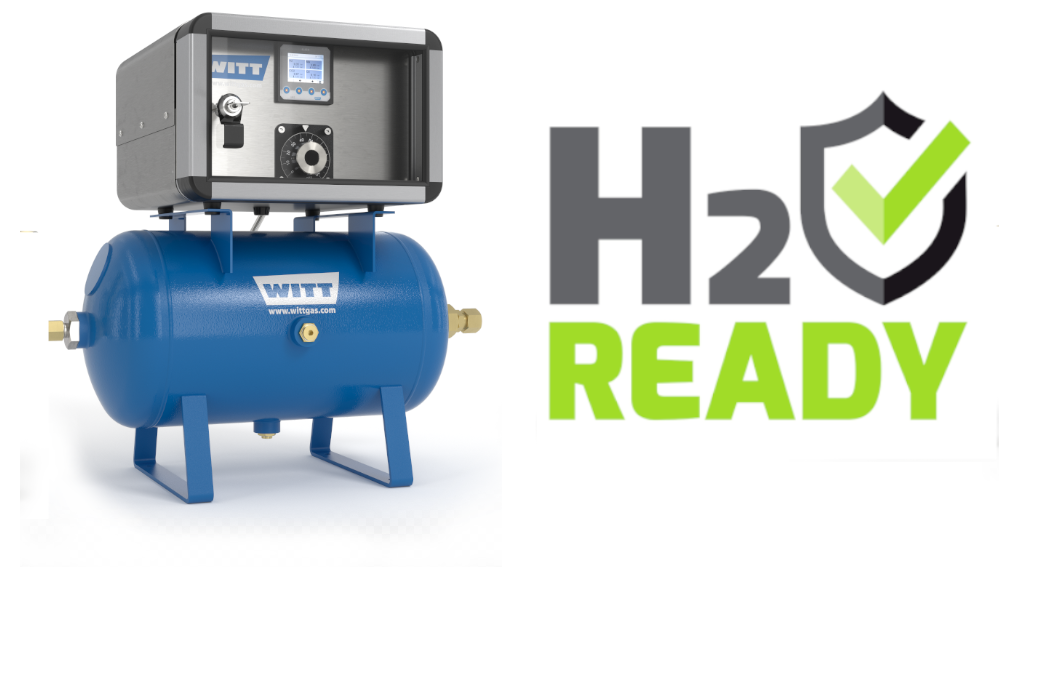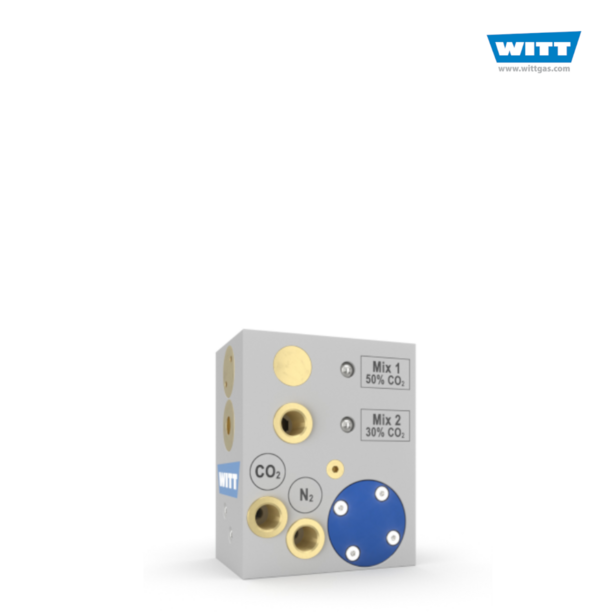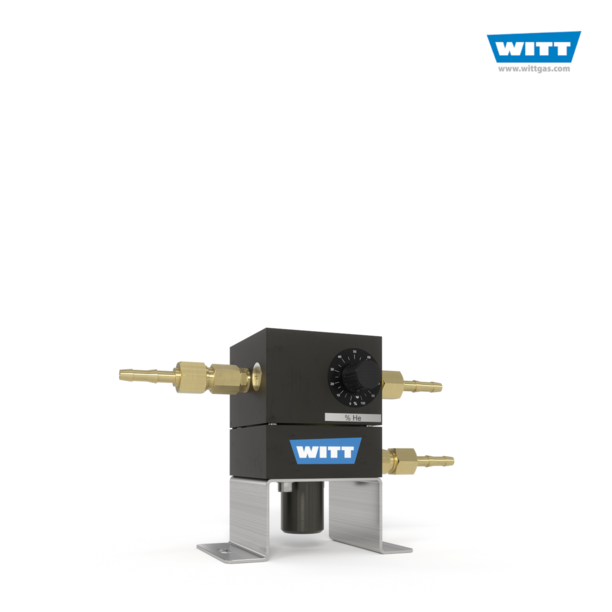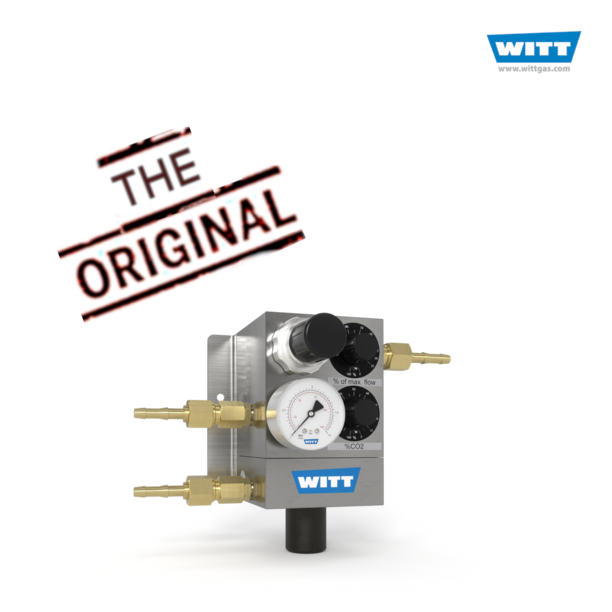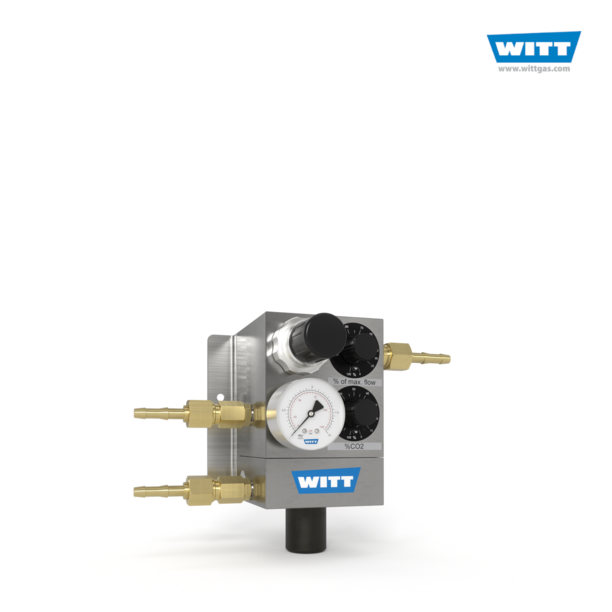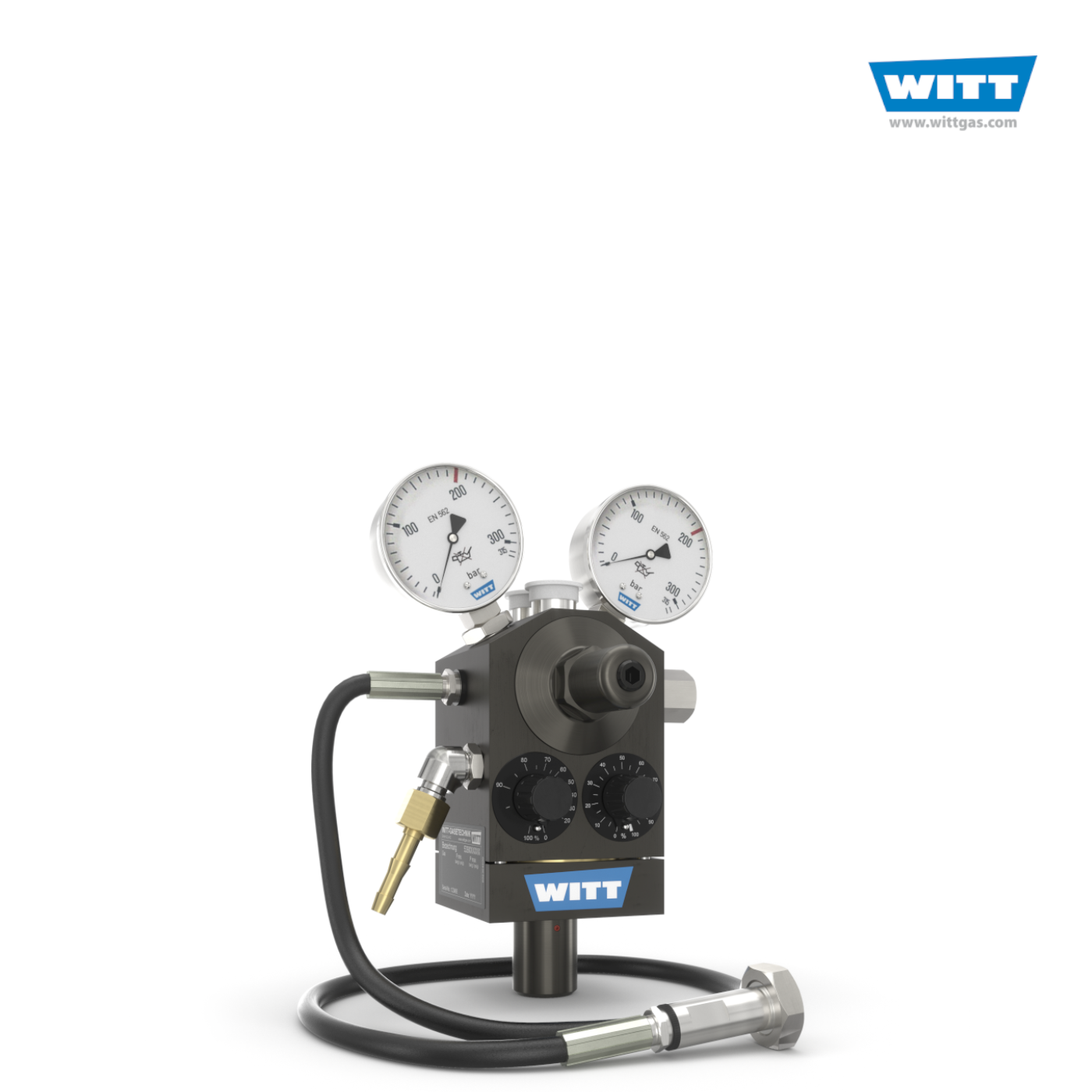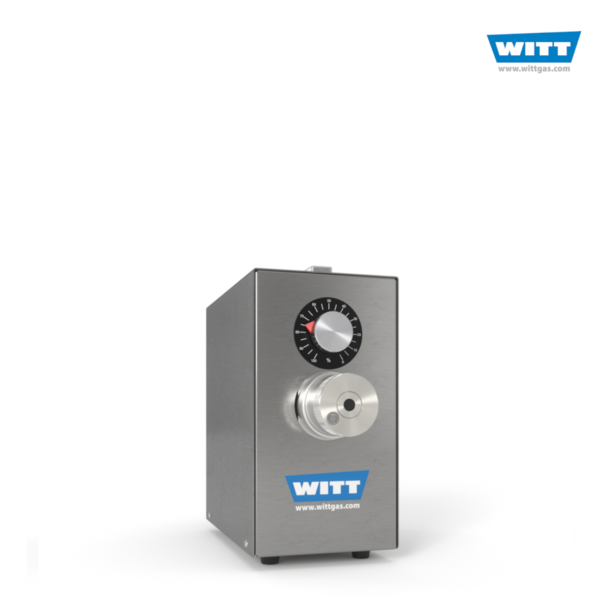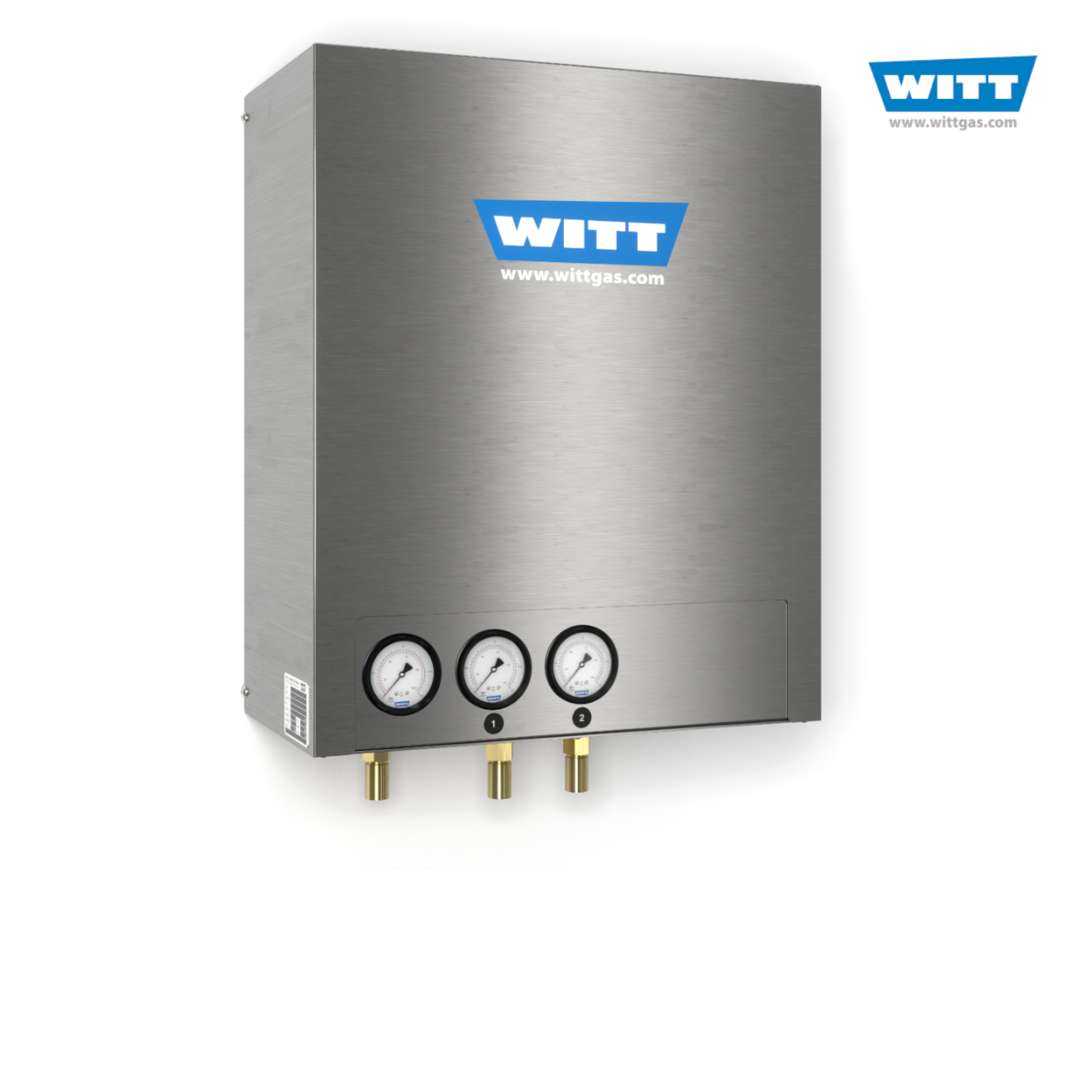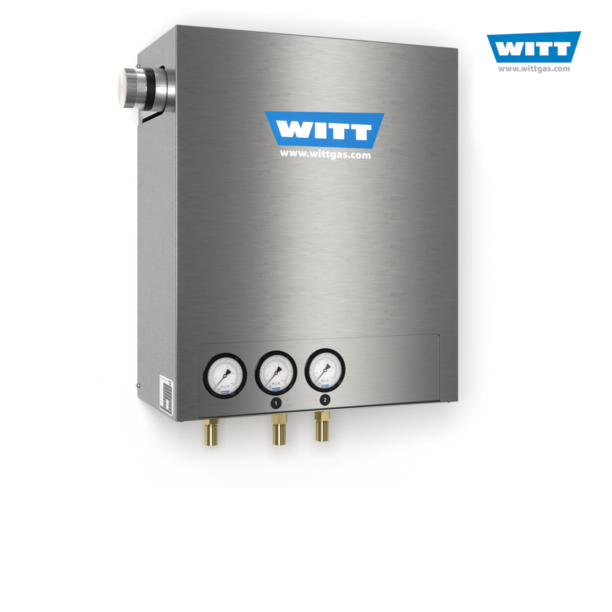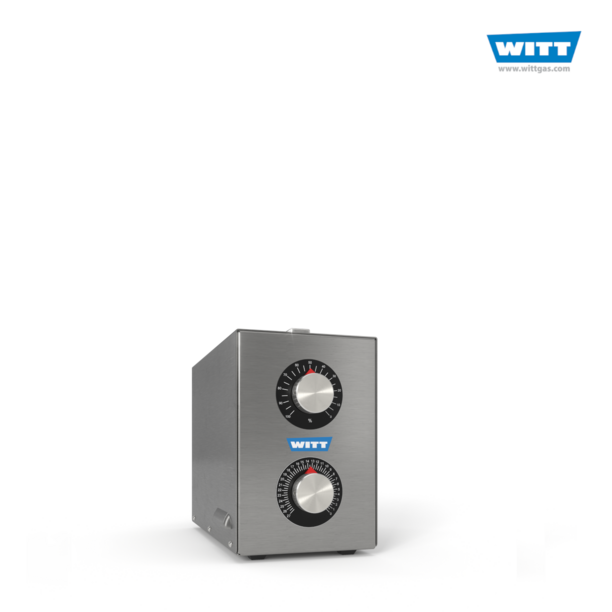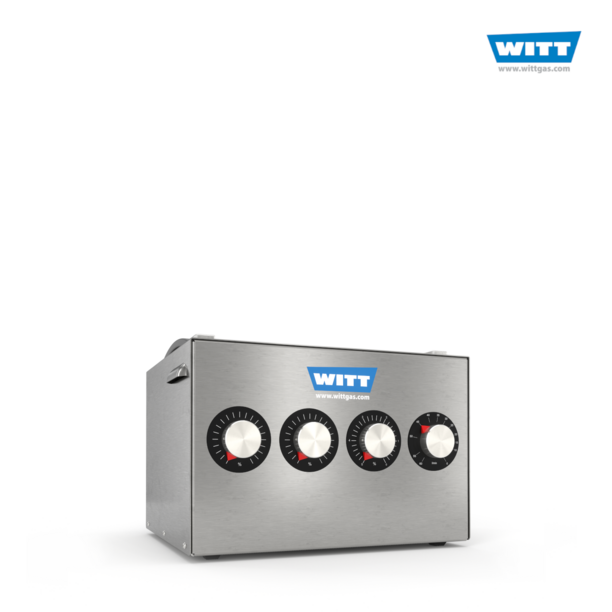Gas Mixers / Gas Blenders
WITT offers high-quality gas mixers and gas dosing systems for two or more gases, especially for high and strongly fluctuating gas mixture flow rates.
Depending on customer requirements, gas mixers are available in different versions for different output ranges and almost all technical gases: These include argon (Ar), carbon dioxide (CO2), oxygen (O2), nitrogen (N2), hydrogen (H2), methane (CH4), helium (He), carbon monoxide (CO) and lean air.
The right gas mixer / gas blender for every application
WITT offers high-quality gas mixers / gas blenders and gas dosing systems for two or more gases, especially for high and strongly fluctuating gas mixture flow rates.
Depending on customer requirements, gas mixers are available in different versions for different output ranges and almost all technical gases: These include argon (Ar), carbon dioxide (CO2), oxygen (O2), nitrogen (N2), hydrogen (H2), methane (CH4), helium (He), carbon monoxide (CO) and lean air.
Gas mixers / gas blenders can be operated conveniently via intranet, internet or mobile devices. Of course, the gas mixers can also be combined with other WITT products such as gas analyzers and supplied as integrated complete solutions.
What are gas mixers / gas blenders needed for?
Gas mixers / gas blenders make it possible to produce the optimum process gas at any time, whether it is the perfect protective atmosphere in a food package or the optimum mixture for welding and cutting metals, the gas supply to a burner, special gas mixtures in a laboratory or the preparation of medical gas compositions, for example for anaesthesia.
Some gas mixers can also be transported to the point of use, enabling more economical and flexible use of process gases.
In which industries are gas mixers / gas blenders used?
Gas mixers are used in numerous industries, for example:
Some examples of the use of gas mixers / gas blenders:
Gas mixers / gas blenders in the metalworking industry
In industrial metalworking, the quality of the process gases is of decisive importance for precise welding, cutting or melting processes, especially with the gases argon and CO2. WITT gas mixers feature simple operation, infinitely variable mixture adjustment and high flow rates. Precise control technology and equal pressure control to compensate for pressure fluctuations ensure exact and constant mixing ratios.
Medical technology
WITT gas mixers for "synthetic air", a mixture of pure oxygen and nitrogen, are used in many medical installations worldwide. Due to intuitive operation via touch screen, low investment and maintenance costs and highest possible uptime, WITT gas mixers are also the first choice in the medical field. They are also certified as Class IIb medical devices with CE marking and approved according to the 93/42/EEC directive (supplemented by Directive 2007/47/EC) and were designed in accordance with DIN ISO 7396-1.
Helium leak test
Helium leak tests are used above all to test sensitive products that must be absolutely leak-proof. Since helium as a noble gas is very expensive, it is partly mixed with nitrogen to make its use more economical.
After the leak test, the gas mixture used is collected, analyzed and corrected if necessary - all fully automatically with WITT gas mixers.
Food industry
When packaging food under protective gas (Modified Atmosphere Packaging, MAP), the aim is to ensure the longest possible shelf life and the freshest appearance.
The optimal gas composition of CO2, oxygen, nitrogen or argon is of decisive importance here. WITT supplies gas mixing and gas dosing systems for every type of packaging machine in the food industry, such as vacuum, thermoforming, tubular bag or hand chamber packaging machines.
Glass processing
Whether a living room spotlight, PC screen or rear fog lamp: the desired product is manufactured from glass blanks under high temperatures and sophisticated technology.To generate the required melting temperature, precise mixtures of fuel gas and air / oxygen are ignited. WITT's state-of-the-art gas control systems have been tried and tested for years, regardless of whether a premix burner or an external burner is required.
Laser Technology
WITT gas mixers for laser cutting and laser welding are the product of choice for the reliable production of the laser gas in the resonator chamber of a CO2 laser or for the mixing of the appropriate working gases for the arc and the material in the molten pool. They ensure precise and stable gas mixtures upstream of the actual process, even in the case of fluctuating withdrawal quantities.
Diving technology
To weld lengths of pipeline on the seabed, it is often necessary to dive to extreme depths. Special gas mixtures are used to supply breathing air for this purpose. Here oxygen and helium (Heliox) or oxygen, nitrogen and helium (Trimix) are used. The diving gas Heliox usually consists of 79% helium and 21% oxygen. Depending on the depth to be submerged, the gases are combined on site using WITT gas mixers.
Where are gas mixers / gas blenders also used?
In addition to classic applications, gas mixers are also used in other areas. Some examples are banana ripening, odorizing of gases, double glazing production, filling of airbags and in the filling of beer barrels.
What types of gas mixers / gas blenders are there?
Gas mixers are available in different versions. The main difference lies in the mixing technology used. The following four gas mixer types are available, and their selection depends on the application:
- Gas mixer with mechanical mixing valve
- Gas mixer with electronic mixing valve
- Gas mixer with pneumatic flow regulator
- Gas mixer with flow regulator
How does a gas mixer / gas blender with a mechanical mixing valve work?
Gas mixers with mechanical mixing valves have been tried and tested in countless installations for decades. With this process, mixtures of almost any gases can be reliably produced. The mechanical mixing valve has gas inlets and a gas outlet for the mixed gas. By rotating the valve, the flow rates of the individual gases are regulated in an interplay of orifice plates and pistons, thus producing the required gas mixture. Gas mixers with a mechanical mixing valve are suitable for continuous extraction or, with a gas container, also for discontinuous extraction.
How does a gas mixer / gas blender with an electric mixing valve work?
At the heart of these gas mixers, similar to the mechanical mixing process, are proportional or single mixing valves: a movable piston in conjunction with different orifices regulates the flow rate of the gases and thus produces the desired mixture. In contrast to gas mixers with mechanical mixing valves, the electric mixing valves are not operated by hand via a rotary knob, but by means of small electric motors. These electric motors are operated via an electronic control system.
How does a gas mixer with pneumatic flow regulator work?
With this patented functional principle, the continuous mixing of the gases takes place purely pneumatically via a sintered body. Depending on the desired mixing ratio, the individual gases are offered a varying size of sintered body surface area to flow through.
How does a gas mixer with flow regulator work?
The MFC gas mixers generate mixtures by regulating the volume flow of each individual gas involved. One mass flow controller (MFC) is used per gas. The volume flow of the gases is measured in the respective mass flow controller by means of thermal conductivity and then controlled.
The flow rates of the individual gases are then combined to form a mixture. The fully electronic control optimises the mass flow of the gases, and compensates for interferences such as pressure fluctuations or temperature effects.
For more information please also visit www.gas-mixers.com.


